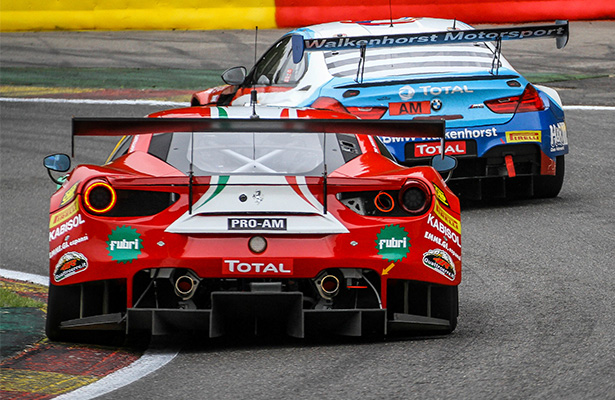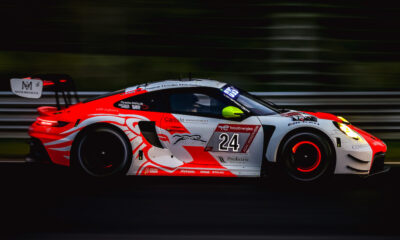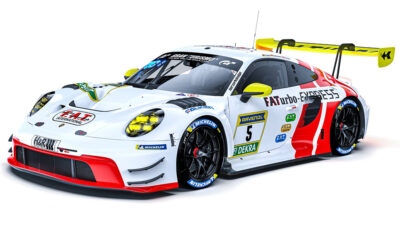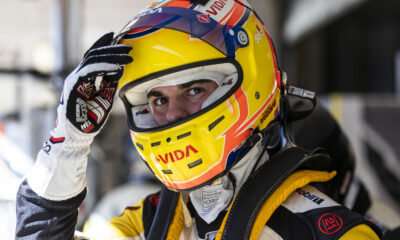SRO Motorsports Group’s new “zero tolerance” policy for on-track conduct, which was introduced following a tumultuous start to the Blancpain GT Series season, has so far paid dividends and has mostly been well received by teams and drivers heading into this weekend’s Total 24 Hours of Spa.
Two major start-line crashes at the opening rounds of the Sprint and Endurance Cups, at Misano and Monza respectively, prompted SRO to take measures in order to prevent teams burning through their budgets before mid-season.
The scale of penalties were increased so that contact is now more heavily penalized than other infractions.
Every on-track incident is now penalized with at least a drive-through penalty, which can be increased to longer stop-and-holds equivalent to up one lap when an affected car is unable to rejoin the race.
Additionally, a distinction is made whether the contact takes place between cars of the same class, or between an Am and Pro driver, with the latter being penalized more heavily.
“Since we’ve introduced it is that so far… Paul Ricard was a good event. In practice nobody came running to me,” Stephane Ratel told Sportscar365.
“I think the drivers are starting to understand. You avoid contact and you particularly avoid contact when you see ‘Am’ written on the car.”
Ratel believes it has already provided for cleaner races and better driving standards in recent rounds.
“When we had back-to-back races, even in turbulent series like GT1 World, the first event you never had [contact] because the guy knew if they [made contact] with the other car, they’d be out of the next race. The penalty works.”
The change also fits into Ratel’s increased focus on re-enforcing the Pro-Am nature of the series, as the championship has recently seen increased numbers of all-pro entries, to the point where more than half of the Endurance Cup field now runs in the top class.
The general response to the new policy appears to have been positive, with most drivers praising the renewed emphasis on clean racing.
“Obviously we all want a safer race,” said Oman Racing’s Ahmad Al Harthy, who competes in the Pro-Am class. “The organizers decided to put more pressure on the Pro drivers, because they have more experience.
“Respect is needed; that’s what it’s about. I think it’s been going in the right direction since the two big crashes at the beginning of the season.
“The fact that they take into account the class of the car you hit is justified, just because the pro guys should have more experience. Unfortunately some pro drivers have caused this, and that’s what it’s about.”
Strakka Racing owner/driver Nick Leventis, meanwhile, shared a similar view.
“There’s a little bit of luck involved, but I think it’s right for pro drivers to be more wary of ams because they’re more experienced,” he said.
“It’s unfair to expect ams to behave in the same way as pros. If you’re going to have a Pro-Am championship, you have to allow the pros to know what they’re doing, they need to get over their issues of hitting people.
“For me, there are far more serious issues going on in this championship with the BoP than complaining about the level of pro drivers getting hit.”
Leventis compared the situation in Blancpain GT with his background in the FIA World Endurance Championship and at the 24 Hours of Le Mans.
“There’s a big speed differentiation between the cars and it’s probably easier to avoid contact there,” he said.
“I’m not going to criticize anybody. Honestly, of any championship I’ve raced in, it certainly has the highest level of drivers all racing within the same bracket.”
Pole-sitter James Calado, however, has shared a different view, with the Ferrari factory driver calling for further professionalism within the series.
“It shouldn’t make a difference if it’s an Am or not,” Calado said. “I think there’s a little bit of inconsistency from what I saw. That’s the rule and it’s the same for everyone, we just got to make do with it.
“I know it’s a difficult situation to manage, but for me the procedure needs to be a little bit different.
“Maybe we could make it better by not mixing the pros and the ams and just make two separate grids as the Pro Cup already makes up half the field.”
John Dagys contributed to this report


























